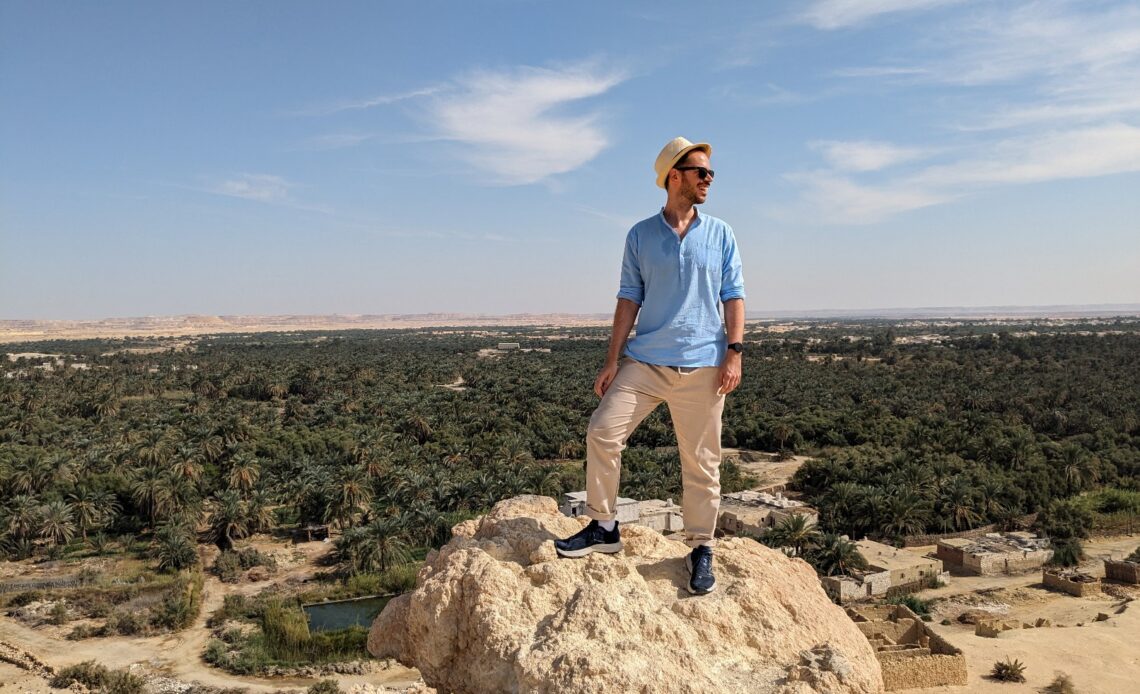
After eight days of travelling along the Nile, I spent three nights visiting the Siwa Oasis. This far-flung remote town was unlike anything I experienced while travelling in Egypt and I’m so happy I added it to my trip. Located over 700km from Cairo by road, Siwa is a commitment for sure – and just travelling to Siwa felt like a bit of an accomplishment – but as you’ll see below – the effort of visiting this desert town is totally worth it.
Siwa is a geographically and historically isolated settlement situated between two lakes, almost hidden beneath an extensive canopy of palm trees. The oasis was only connected to the outside world via tarmac road in the 1980s, which means a unique identity and culture developed here, far removed from cities like Cairo, Luxor or Aswan. Lonely Planet calls it ‘the stuff of desert daydreams’ and it’s honestly hard to describe it any other way.
Where is Siwa Oasis?
The first thing that likely comes to mind when you hear about Siwa is: where on Earth is it? The Oasis is located in the very Western part of Egypt, very close to the border with Libya. It’s around 300km inland and sits on the very edge of the Great Sand Sea, part of the Sahara Desert. It’s not far from the Qattara Depression, the second-lowest place in Africa. In fact, Siwa itself is 25m below sea level. View Siwa on Google Maps.
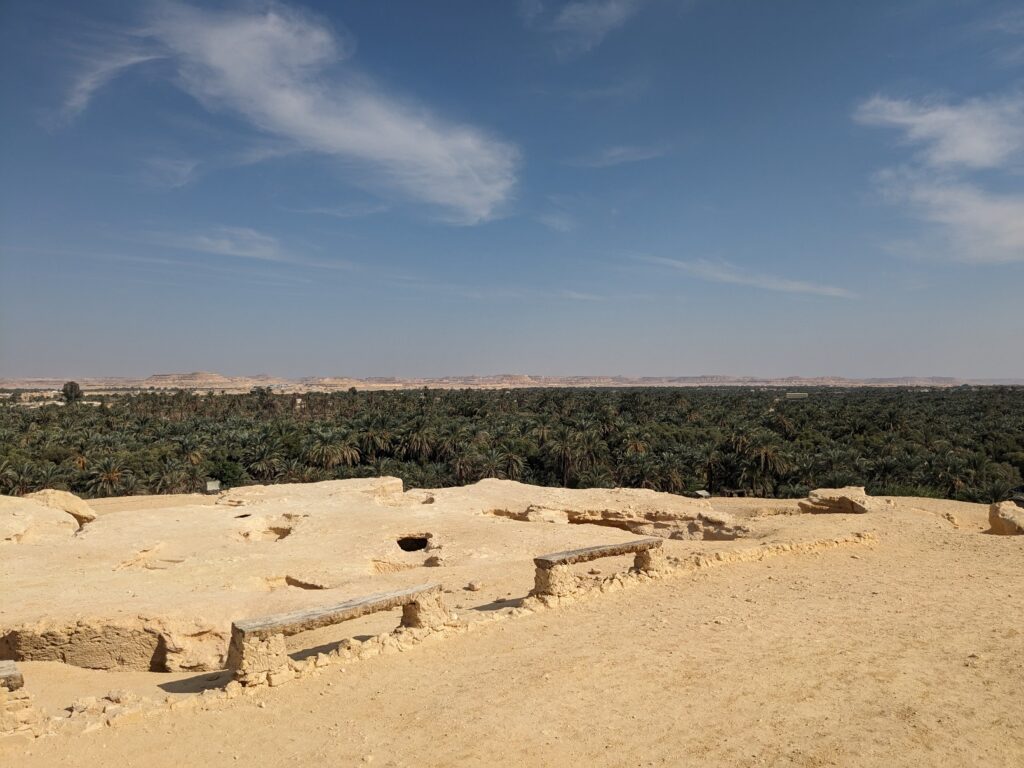
Is Siwa worth visting?
Yes, Siwa is absolutely worth visiting. I’m so happy I visited. There are two main reasons I would recommend visiting Siwa.
- Firstly, it’s (quite literally) miles away from anything I experienced in cities along the Nile: Siwa is calm, relaxed and easy to explore under your own steam. You’ll also encounter fewer tourists here.
- Secondly, it’s simply miles away from anything. The region’s historic isolation means that you can see things here that you won’t be able to find in other parts of Egypt, but you’ll also have the chance to venture out into the desert or simply climb to a vantage point and see the oasis sprawling out before you.
Read about the first part of my trip to Egypt (with G Adventures) here.
Two days in Siwa: my itinerary
Below is a recap of what I did during my stay in Siwa. I owe a debt of gratitude to blog posts from Quit and Go Travel and Backpack Adventures as these posts really influenced my decision to visit Siwa and massively informed my itinerary.
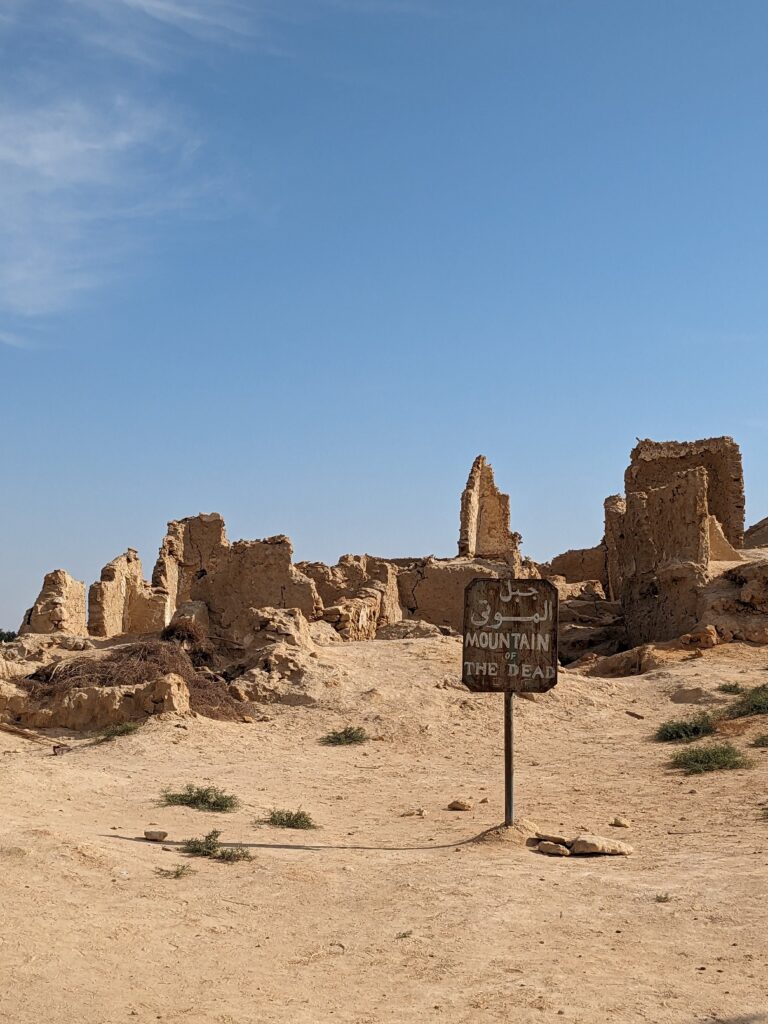
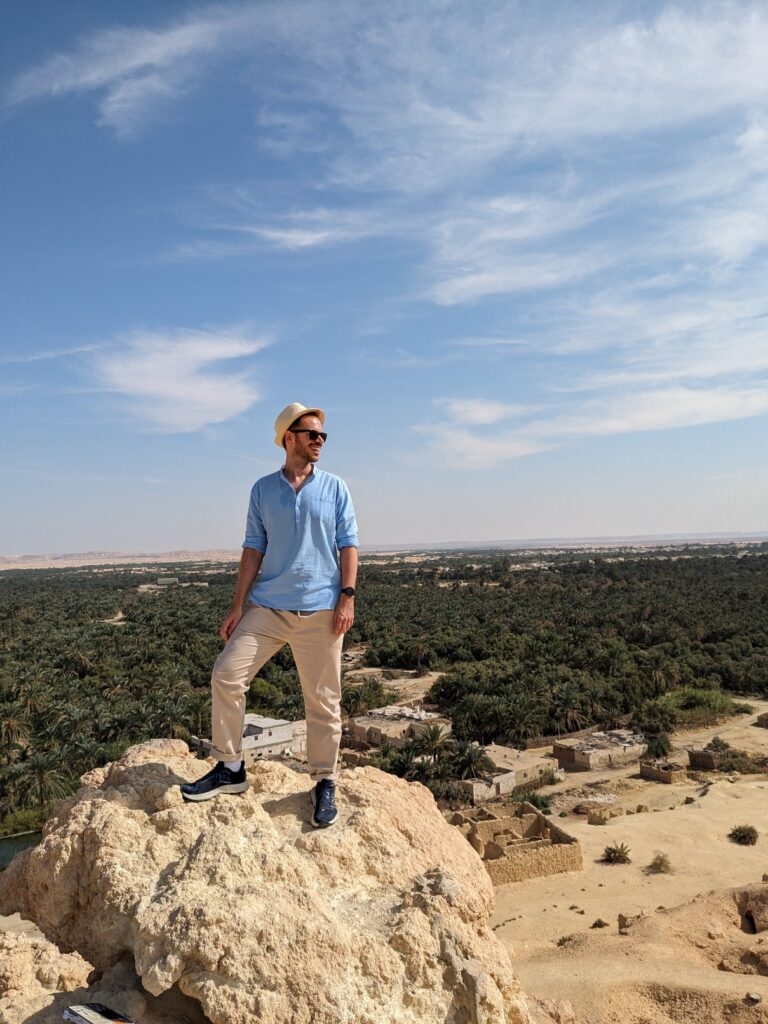
Day One: What to see in central Siwa
The first thing I did on my first full day in Siwa was head to the Mountain of the Dead, also known as Gebel al-Mawta. Located just to the north of Siwa’s town centre, this small mountain is one of several areas in the oasis to give you a great view over the town and the palm trees and out into the desert.
As the name suggests, the Mountain of the Dead was also an important place in ancient Siwa for burying important people and – unsuprisingly for Egypt – there are four tombs there you can visit. The tombs here are miniscule compared to elsewhere in Egypt, they are also not nearly as grand or well preserved (some just have one or two decorated walls), but this still felt like a real highlight for me; after getting used to fighting with crowds and sweating to death in tombs at the Valley of the Kings, entering the tombs alone and having a look around felt really cool. The level of detail remaining also feels more authentic somehow.
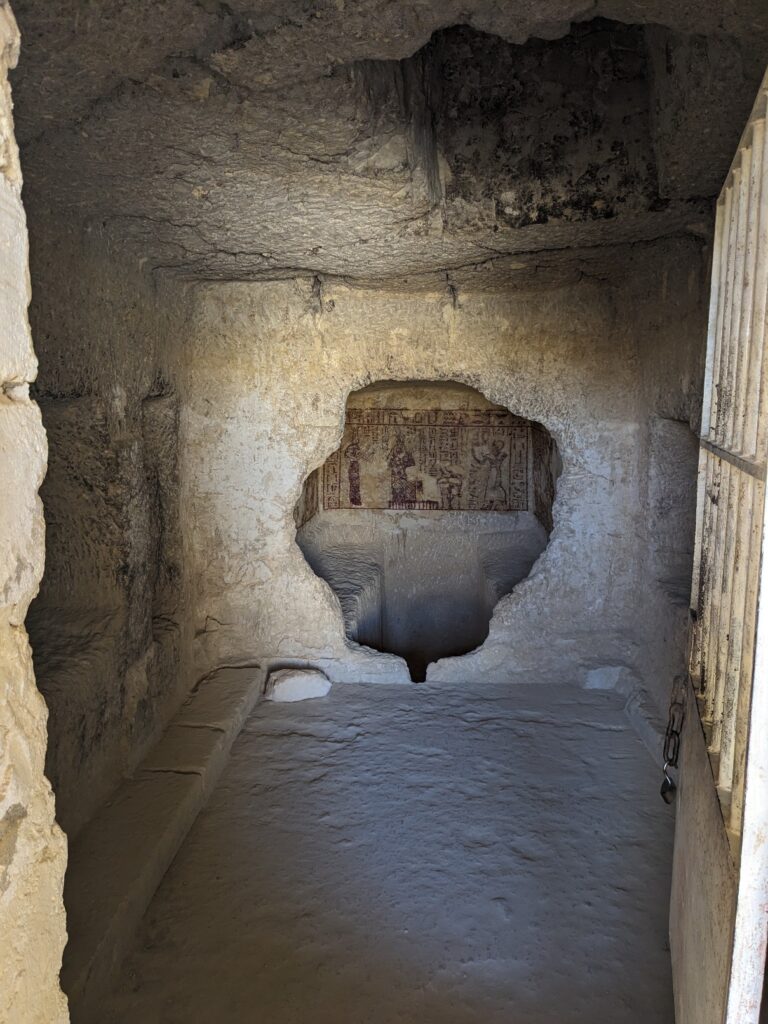
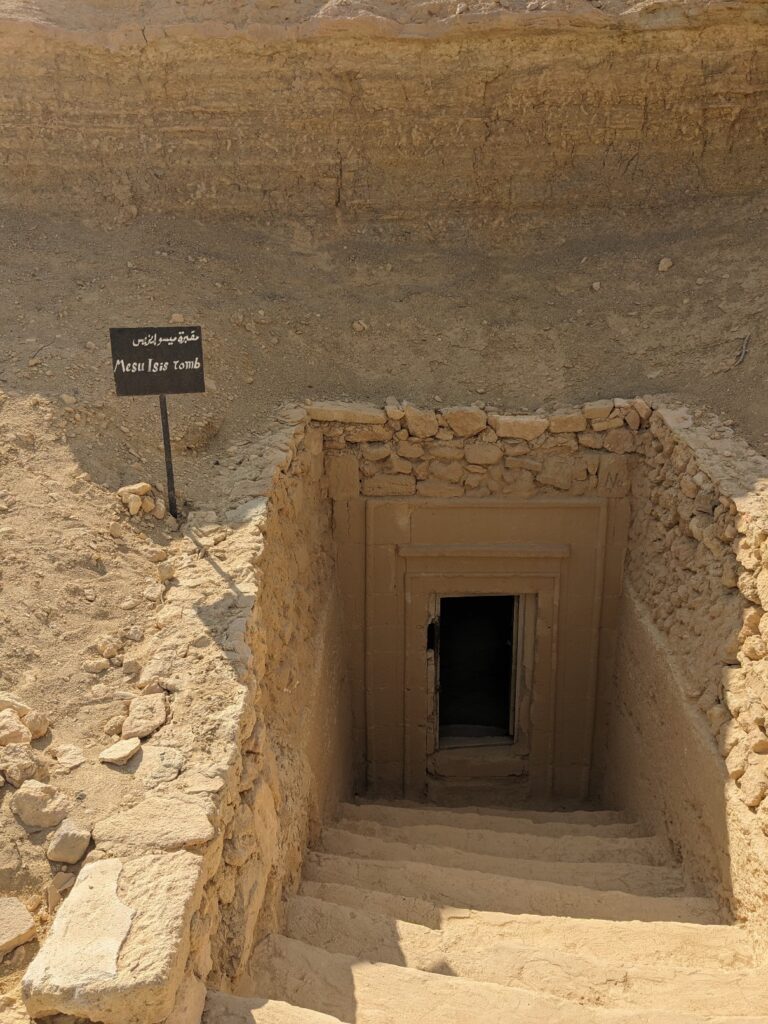
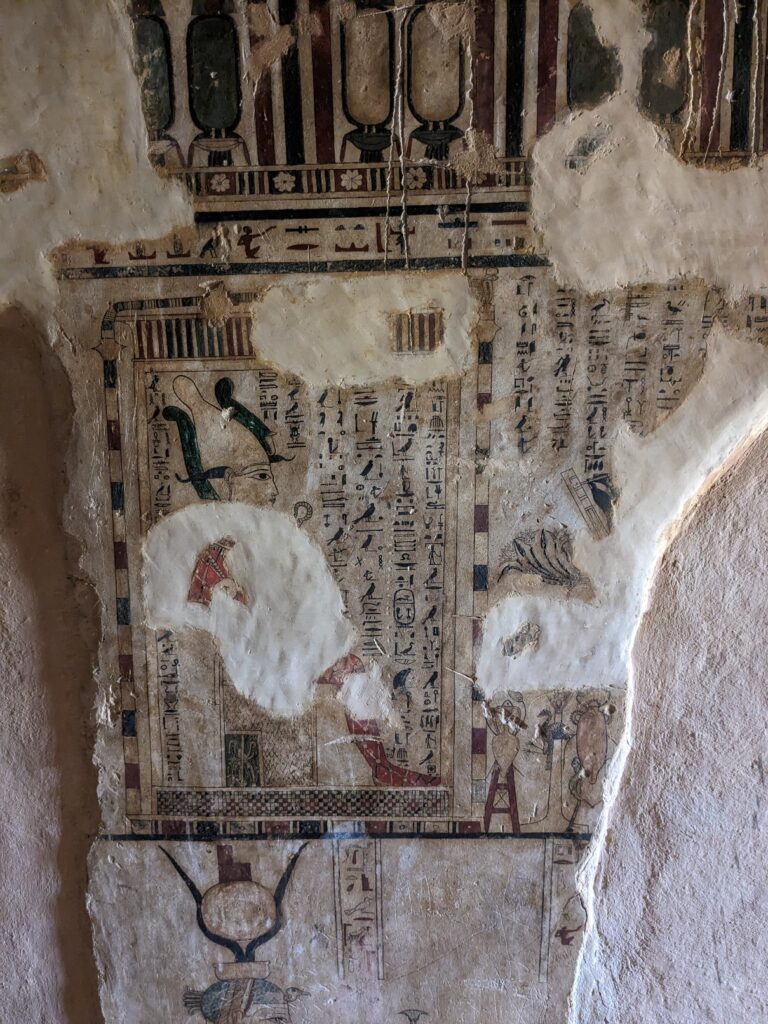
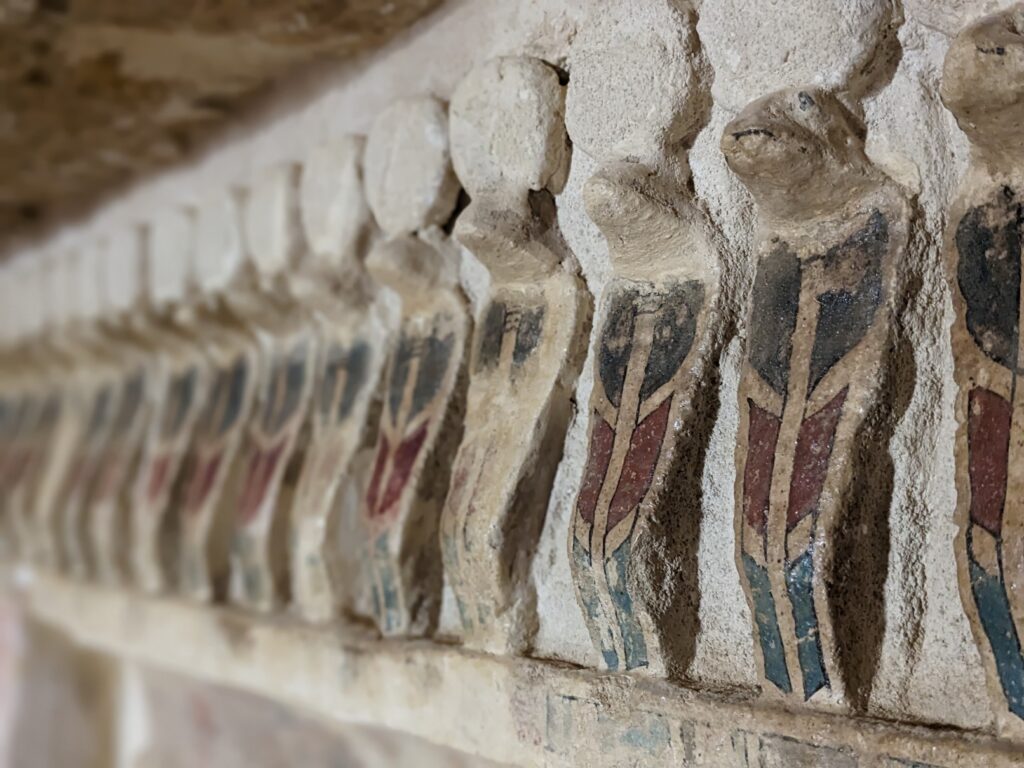
The mountain is pockmarked with deep holes, which I assume were formerly graves or tombs. The site was also used by locals for safety during WWII – Siwa was bombed by the Italians.
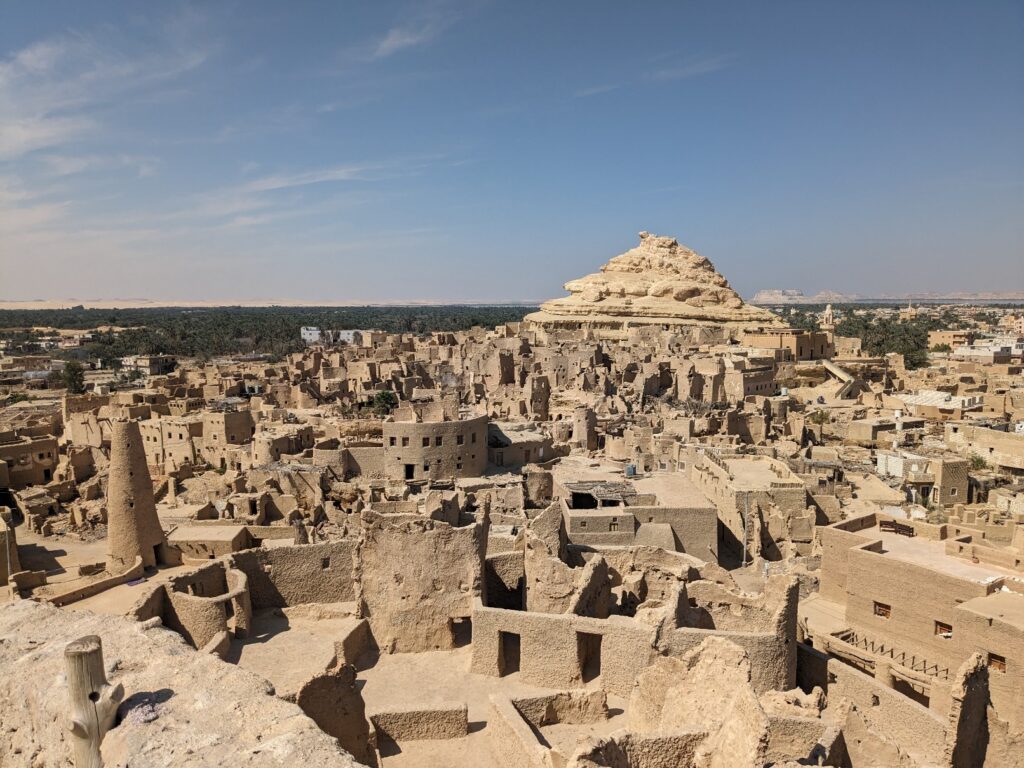
Things to see: The Shali Fortress
Directly after the Mountain of the Dead, I visited the Shali Fortress, located right in the centre of town. The fortress is another really impressive place to visit. At one point, the fortress was to home most of the inhabitants of the oasis, but it was destroyed during three days of heavy rain in 1926 which ruined the mud-brick construction. But as you explore the ruins, you’ll see the forms of old stairs or rooms which show how the dwellings might have been set out.
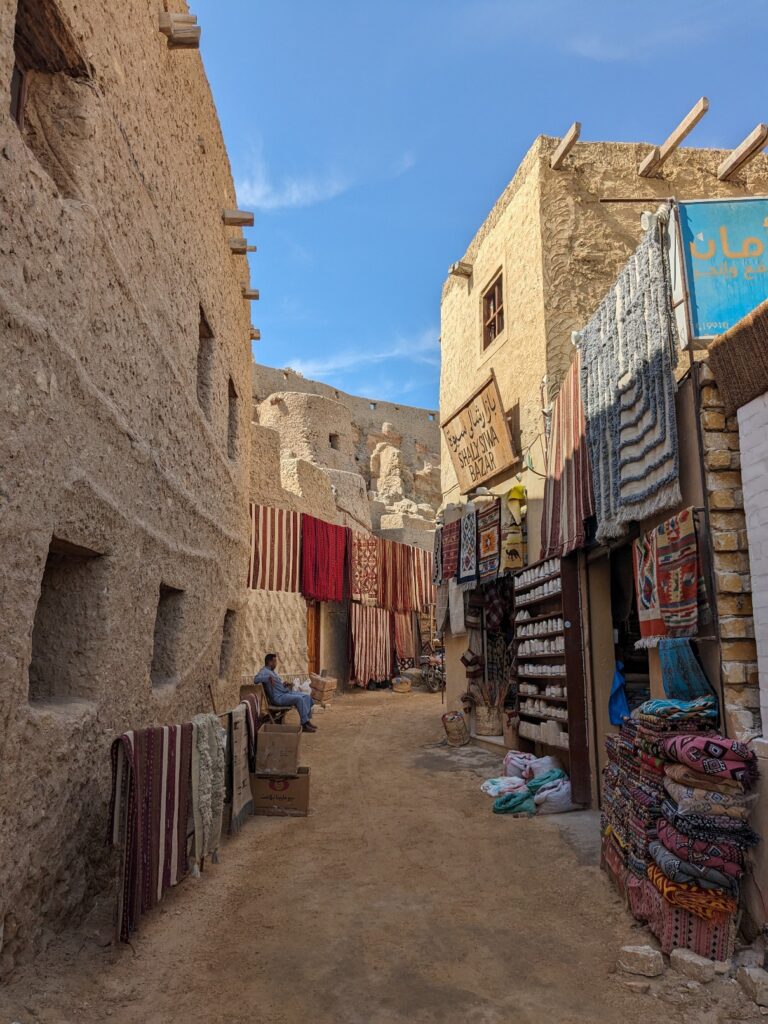
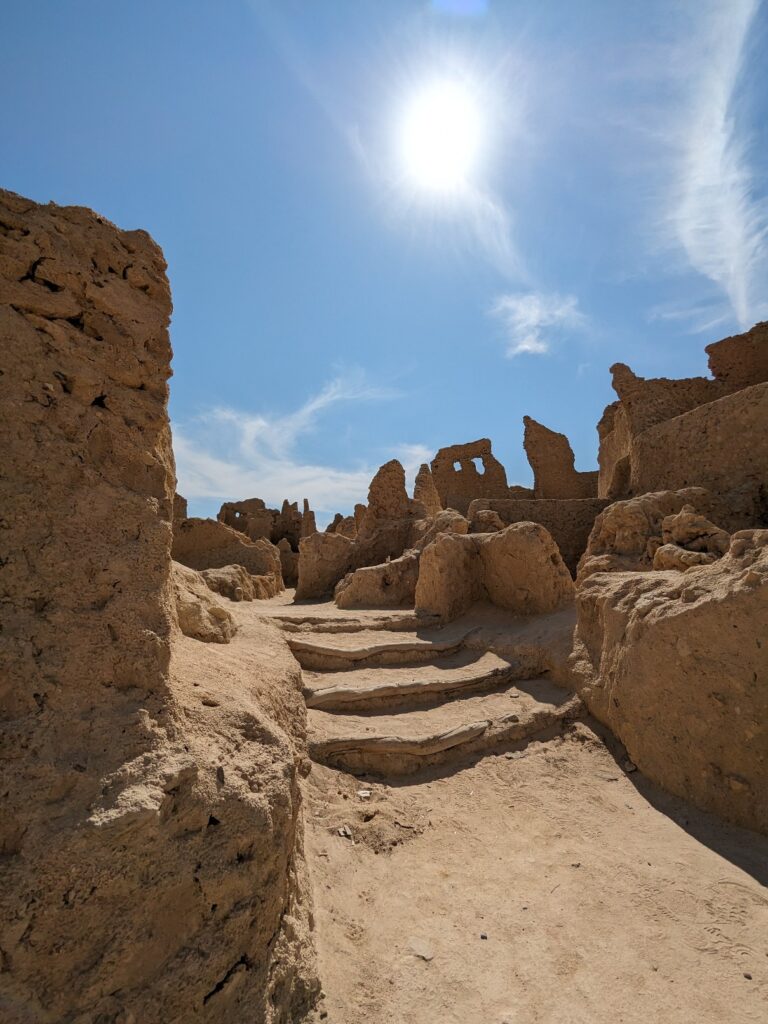
The site is sprawling and offers more great views over the town. A few adjacent buildings and homes have been restored (including a mud-brick mosque within the fortress walls) – these are largely shops and guesthouses. The shops here are really worth spending some time exploring, as the experience is completely relaxed and stress-free – nothing like other bazaars in Egypt!
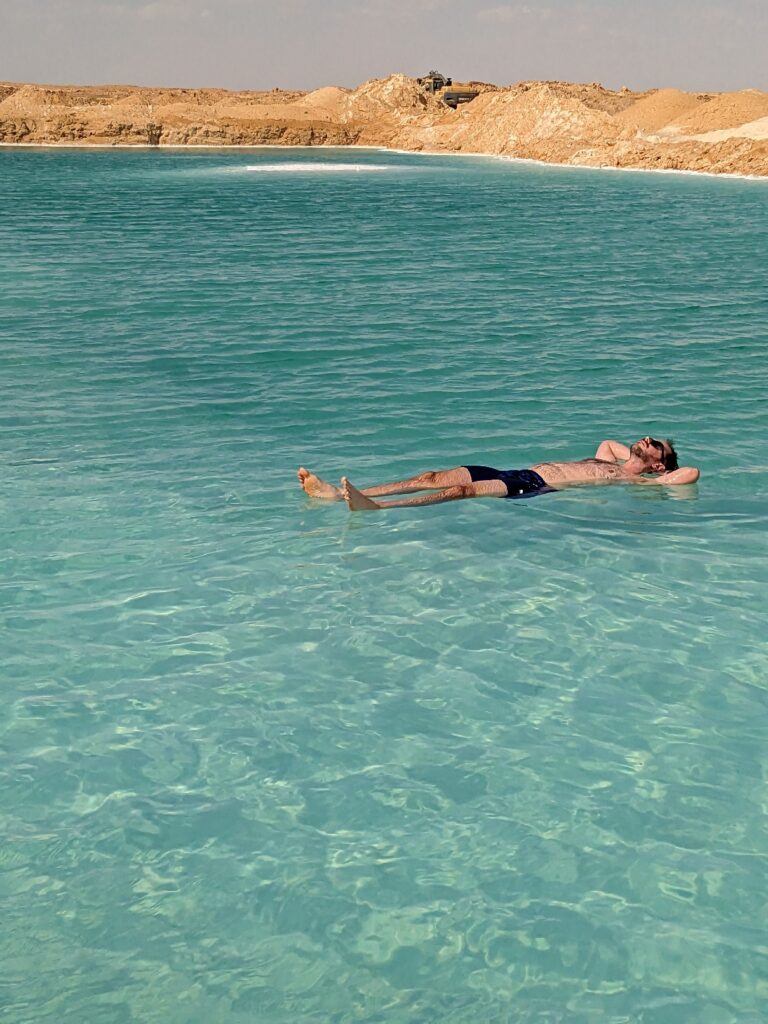
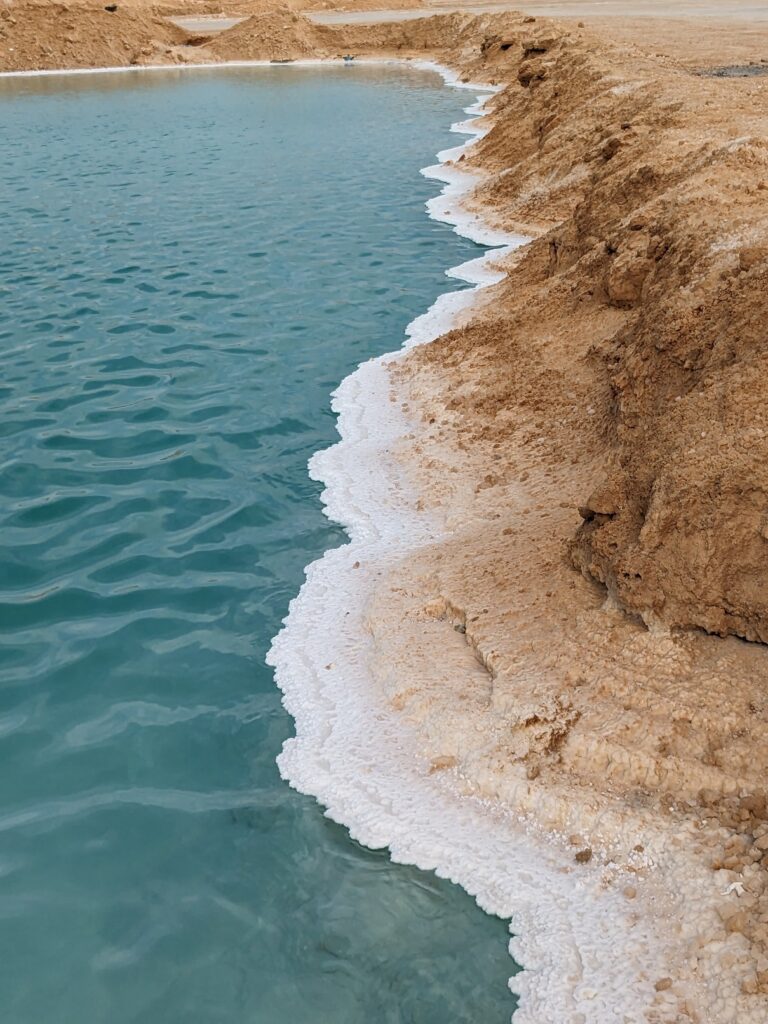
Outskirts of the Siwa Oasis: the salt pools of Siwa
After the fortress, I stopped for lunch and went back to the hotel to freshen up before Mohi (the local taxi driver I exchanged numbers with) picked me up to visit the salt pools. Now if you’ve googled Siwa even once, you will very likely have seen the impossibly blue water of the salt pools, which have become something of an Instagrammer’s dream. I will say that the salt pools are absolutely worth visiting, but the reality is a little bit different to how I imagined…
Firstly, the pools are entirely man-made and located within an active salt quarry. This is important for two reasons: firstly, the road to the salt pools is in very poor shape due to the heavy duty trucks which use it to access the quarry (I think Mohi drove no faster than 5mph the entire way, avoiding potholes) – this makes cycling an attractive way to get out to the pools. Secondly, while the experience of floating in the water genuinely is relaxing, you will be able to see and hear the active quarry at work while you float in… tranquility? on the surface of the water.
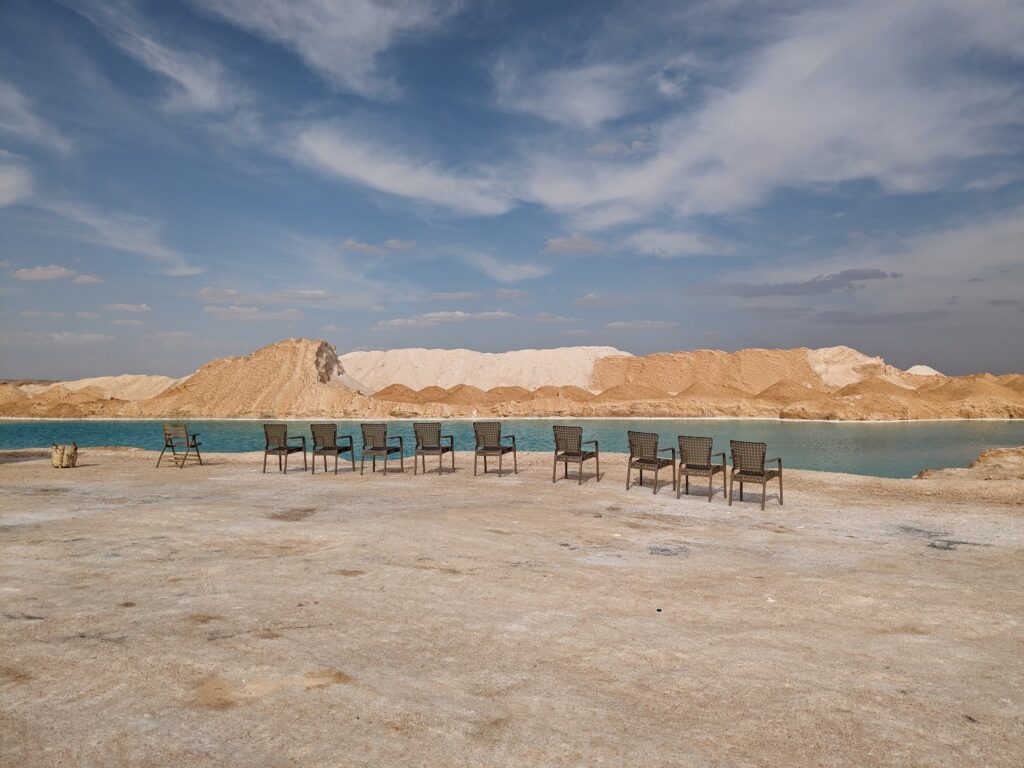
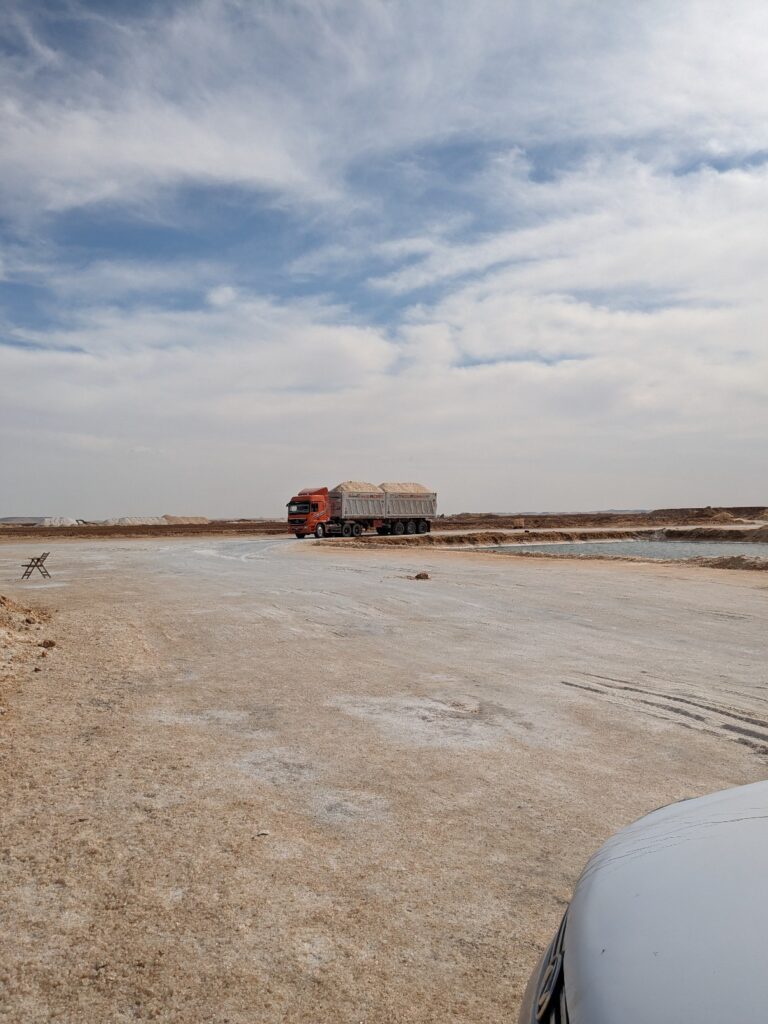
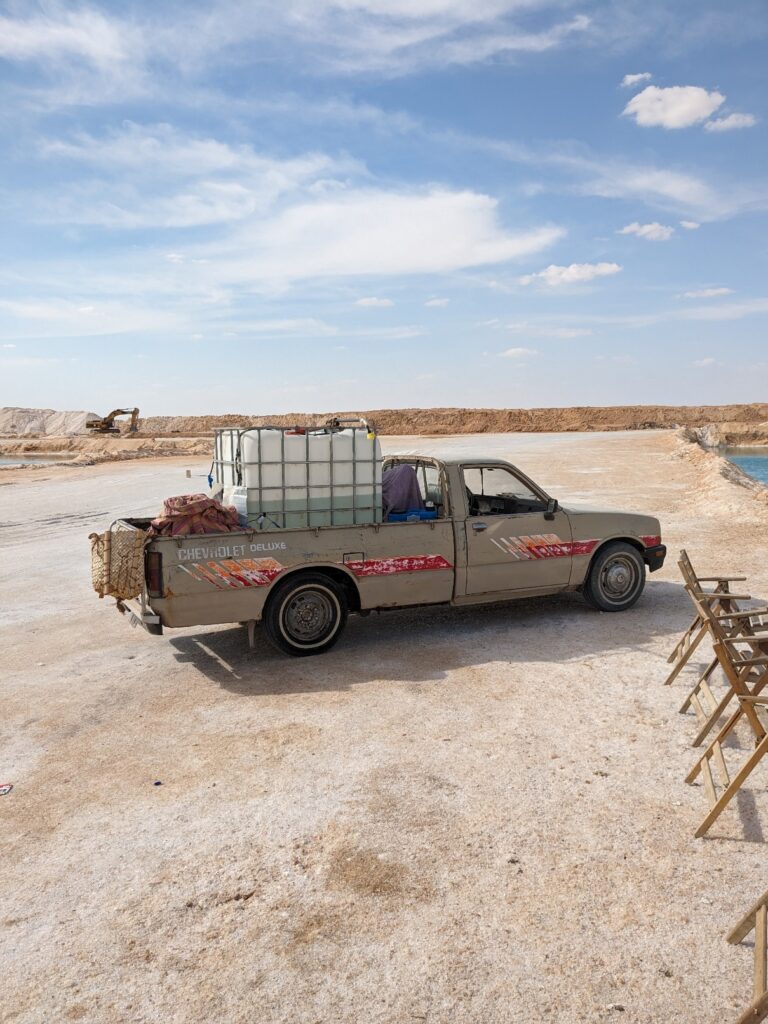
About the salt pools in Siwa
The larger pools near the entrance are very easy to find and the set up is great: parking spaces for cars, seats for the drivers (who are very used to doubling as photographers), plus a guy with a water tank on the back of his car who offers showers with fresh water for 10 EGP (well worth it!).
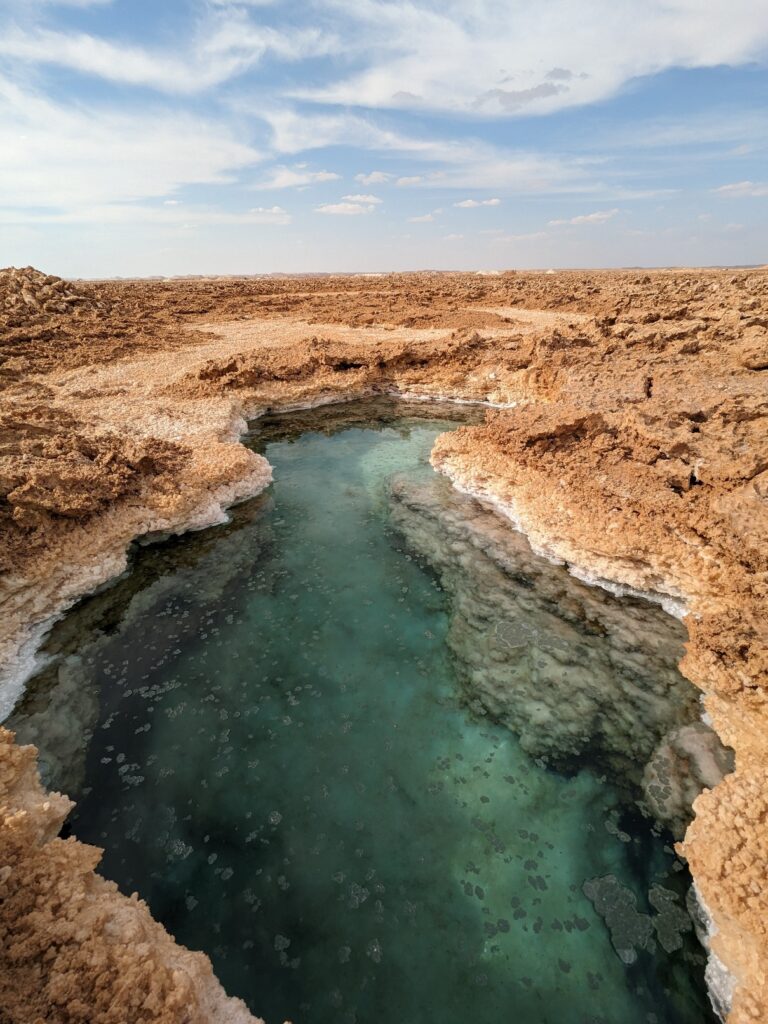
The smaller pools (some only barely large enough for a person) are found further into the quarry. A driver will definitely know where they are, but they could be trickier to locate without one. They are not quite as easily accessible, located in holes in the heavily-salted ground, which has a very tough and spiky external layer. If you go there, it’s purely for the photo rather than for a nice, relaxing time. Still very cool to see though!
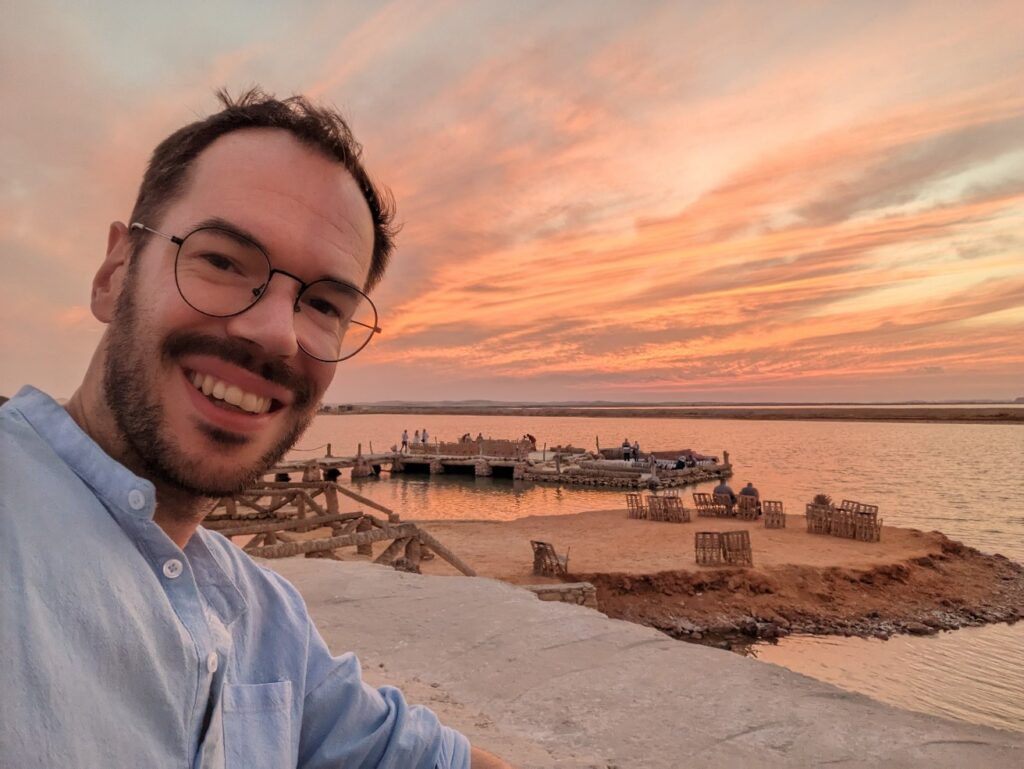
Watching the sunset in Siwa: Fatnas Island
After the salt pools, Mohi and I then drove to the opposite side of the oasis so I could catch the sunset at Fatnas island, where plenty of comfortable viewing spots have been adorned with rugs and blankets so you can watch the sun set behind the water.
I sat here for a few hours reading before anything really got started. I think the overcast evening meant it was a little less spectactular than usual, but the sky was still an incredible pink colour and I had a great time – I would fully recommend this as a nice relaxing spot to end your day in Siwa.
My itinerary in Siwa: day two
On my second day in Siwa, I took to the saddle to explore a few more sights by bike. Cycling in Siwa is pretty easy I would say – outside of the city centre there’s very little traffic. But there’s seemingly even fewer rules, so just be safe and indicate to others what you are doing and where you are turning. I did an 11km-loop between some sites and felt perfectly safe.
On my cycle tour I visited three sites which are all located on the same road: the Temple of Amun (also known as the Temple of the Oracle), the Temple of Umm Ubayd and Cleopatra’s Spring.
A short cycle tour in Siwa Oasis
Very honestly, the Temple of Amun and the Temple of Umm Ubayd were disappointing and could easily be skipped in your Siwa itinerary, however they are very easy to visit in quick succession.
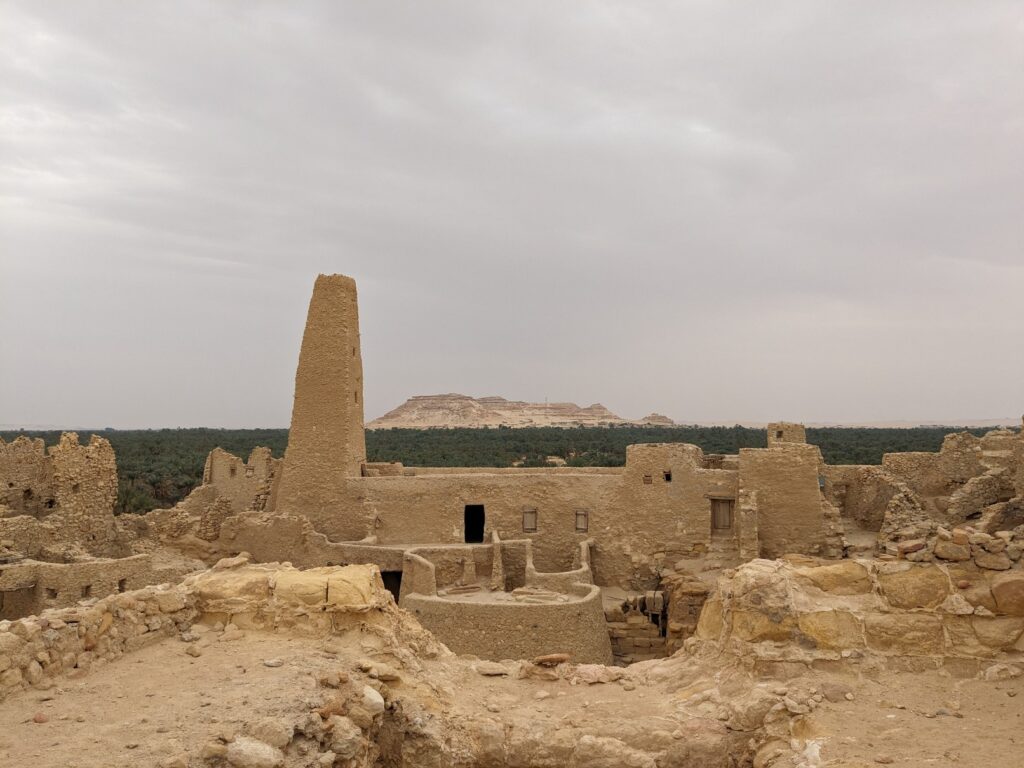

The Temple of Amun sits on probably the most prominent rocky outcrop in Siwa, in the middle of a small hamlet named Aghurmi, which used to be the main population centre of the oasis until the Shali fortress was built. It’s said to be here that Alexander the Great visited the Oracle of Siwa and was declared the son of Amun. However today, there is very little to see. Unlike the Shali fortress, the ruins cannot be fully explored and the restored areas are completely at odds with the rest of the grounds.
Similarly, the Temple of the Umm Ubayd has very little to offer the visitor – it is entirely in ruins, as it was blown up in 1896 so that a mosque and police station could be built from the stones. All that survives now is a single wall with inscriptions and some levelled pillars. On the plus side, it’s only 200m from the Temple of Amun and located directly on the road, so you really don’t need to put it any special effort to visit.
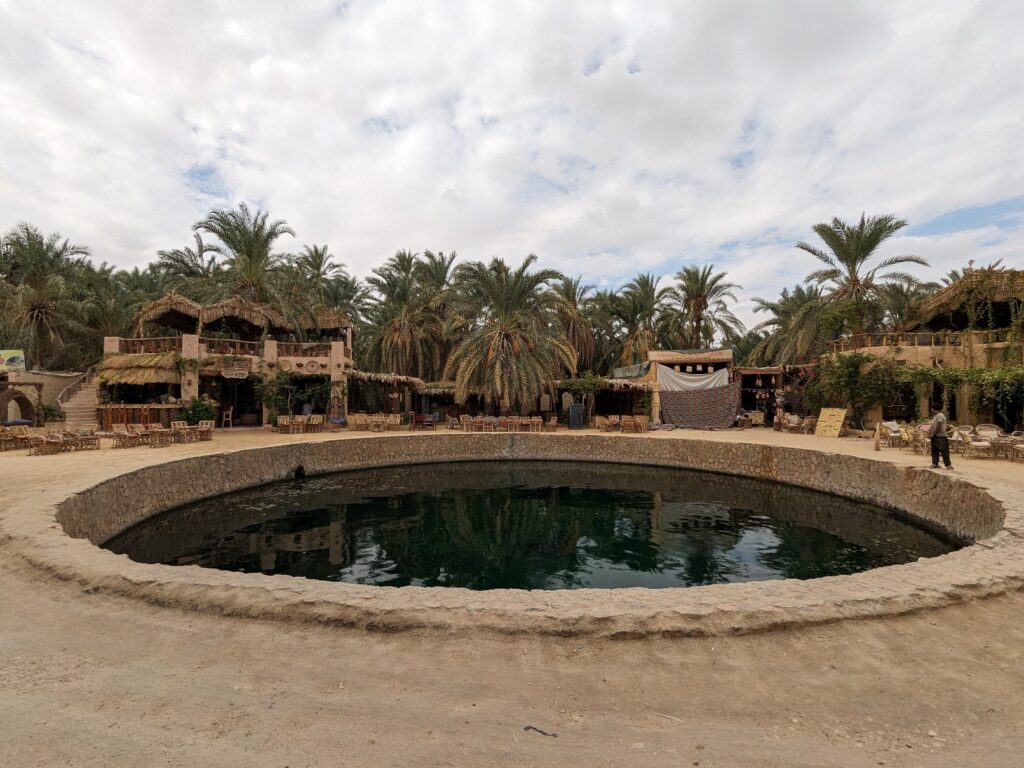
Cleopatra’s Spring
Just a bit further along the same road you’ll find the much-publicised Cleopatra’s Spring. Now, I was a bit sceptical about visiting the spring as Quit and Go Travel had described it as dirty and overrated. However, I am happy to report that that was not the case on my visit and I would 100% recommend visiting.
The spring itself is a deep bright blue pool, where you can see air bubbling to the surface from its depths. The water is a beautiful colour and was kept free of floating algae when I visited by a man who regularly collected it all in one corner with a broom-type thing (I’m sure that’s the technical terminology for it…)
You’ll also find two lovely cafés next to the spring, covered in plants. I sat down on a colourful rug with a book and a mango juice and properly felt like I was in a tree-top, watching other tourists dive into the spring. I honestly could have spent all day here and I would really encourage everyone to visit. Unfortunately, I had to cut my visit short to return my bike (after cycling a loop around Gabal Dakrur mountain) and get ready for my trip into the desert.
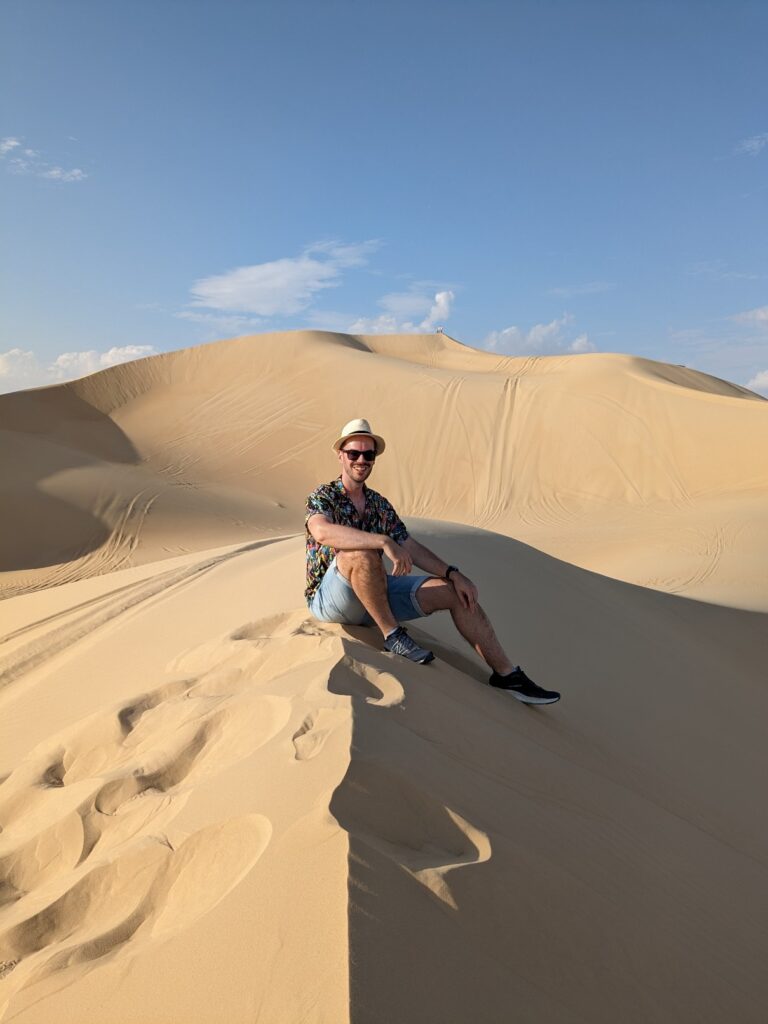
Desert 4×4 tour from Siwa
For the second part of day two, I went out into the desert on a 4×4 with a group of Egyptian tourists from Cairo. I had let Mohi know I was interested in the trip and told him my budget (30 USD) and he arranged everything for me (honestly developing a contact in Siwa is really worth it).
From what I’ve read, going out into the desert poses practically no danger at all, but it nevertheless requires registering with your passport or documents for a special pass for security reasons. This means that all tours leave and get back at the same time and follow a fairly standard itinerary.
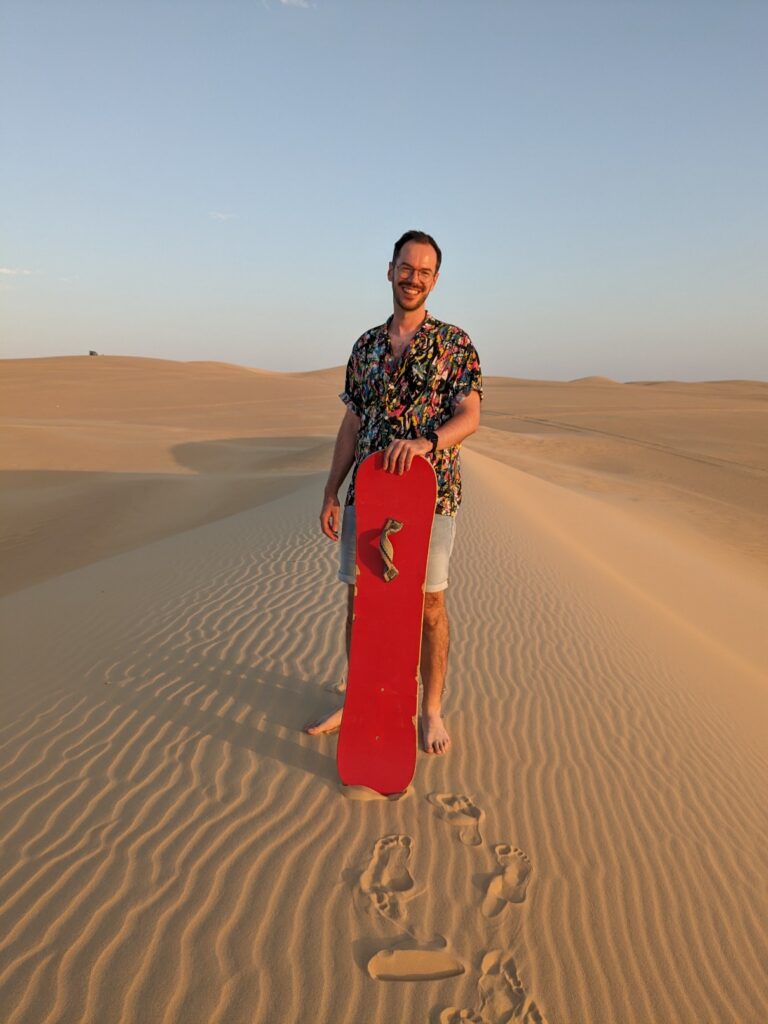
The Great Sand Sea
Siwa is located at the edge of The Great Sand Sea, a vast area of the Sahara made of sand dunes and just minutes outside of Siwa, you will find yourself driving at tremendous speed straight at these towering dunes.
Now, I was somehow expecting a nice, relaxing drive out to the springs at Bir Wahed. Instead, our driver bombed around the sand dunes, driving our jeep off the edge of sand cliffs, speeding up vertical dunes, drifting sideways – you name it, he did it. I was terrified at first but the lads from Cairo were loving it so I tried to just go with it. (The same lads voted me in the front seat as our road trip DJ so I stuck on my running playlist, so the theme tune to our death-defying journey was the very best of Eurovision and 00s Eurodance. They particularly loved “Cha cha cha” by Käärijä (Finland’s Finnish-language Eurovision 2023 entry) – they told me that “cha” is slang for “something very nice.”)
Outside Siwa: desert tour
On the way, we also stopped at a few places, including a cold spring, the Bir Wahed hot springs (just long enough to test out the very warm waters), a former sea or lake bed where we could see some marine fossils in the rock, before wrapping up with a traditional Beduoin tea and some less-than-traditional sand boarding (which I was actually pretty good at!) while we watched the sun go down.
All in all, the tour was a really unique experience and I’m really happy we did it. It would have been a shame to be so close to the edge of the Sahara and not go out and explore it – even if the sheer terror may have taken several years off my life. I paid 30 USD for the tour (locals really love being paid in USD), which lasted around 4 or 5 hours. I was really happy with the value for money, but I’m not sure what the ‘going rate’ would be with an organisation or the tourist office, but I imagine you would possibly be given more info.
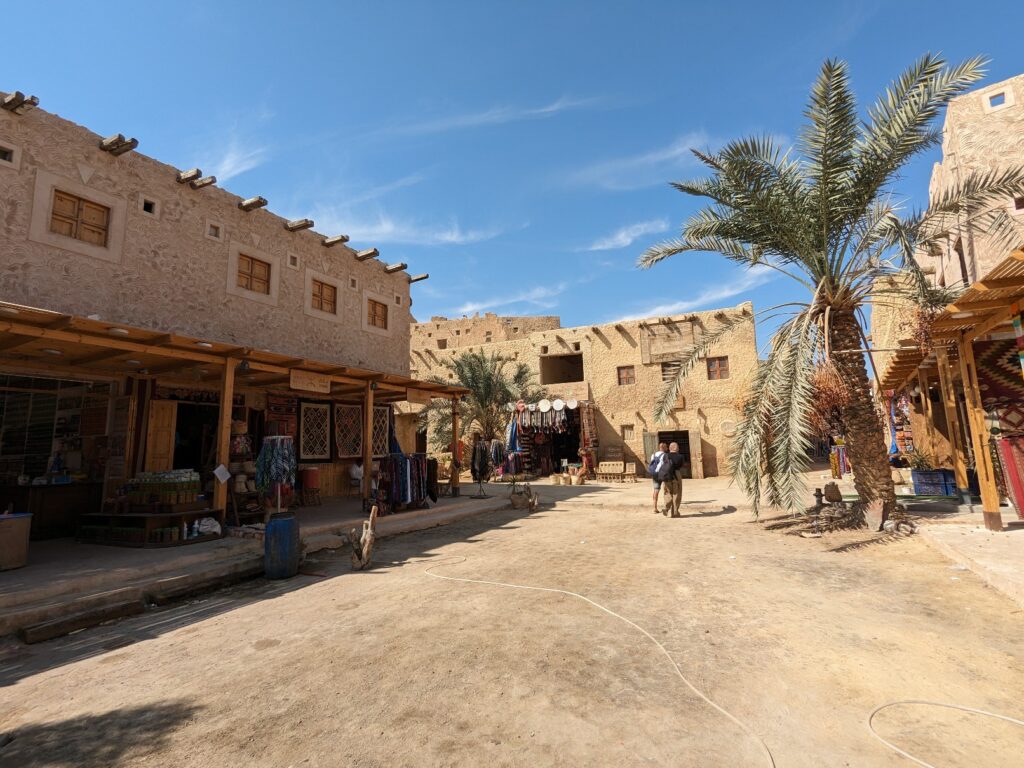
My Siwa itinerary in review
When I look back on my Siwa itinerary, I am really happy with what I did and saw. Sure, there were some hot springs that I didn’t manage to fit in and around 10 more sites Mohi advised I watch the sunset from (the Shali fortress and Darkrur mountain being top of the list), but I really don’t feel like I missed anything.
The only things I would change would be how I got to Siwa and how long I spent there – more on both below.
Top tips for visiting Siwa Oasis
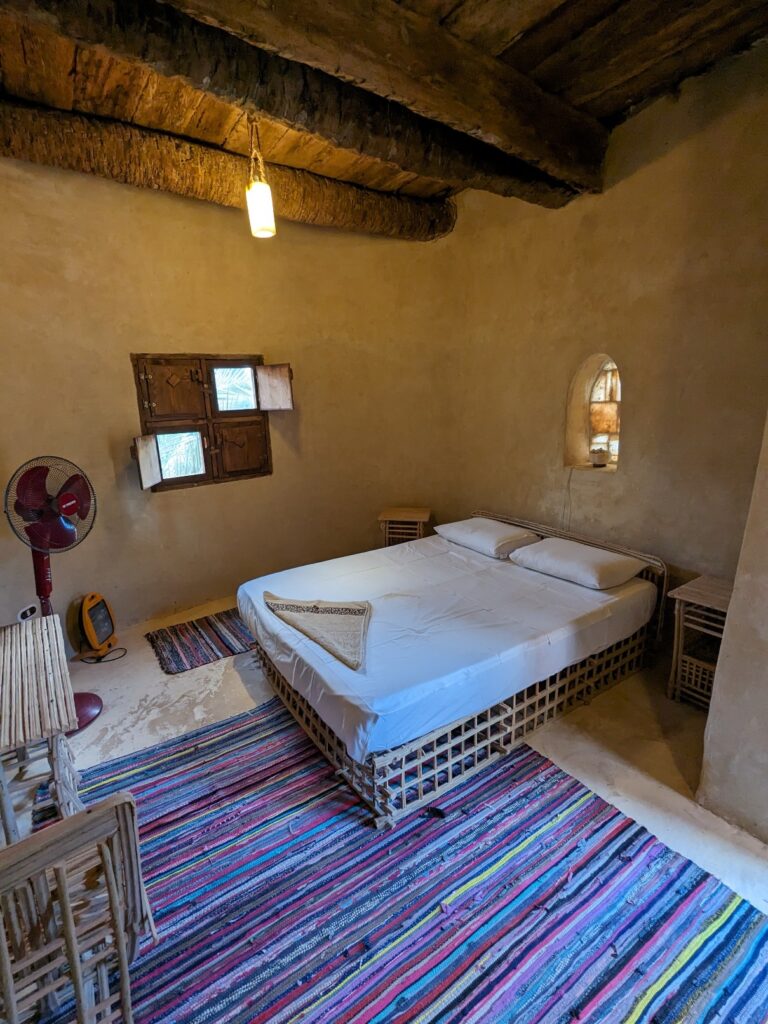
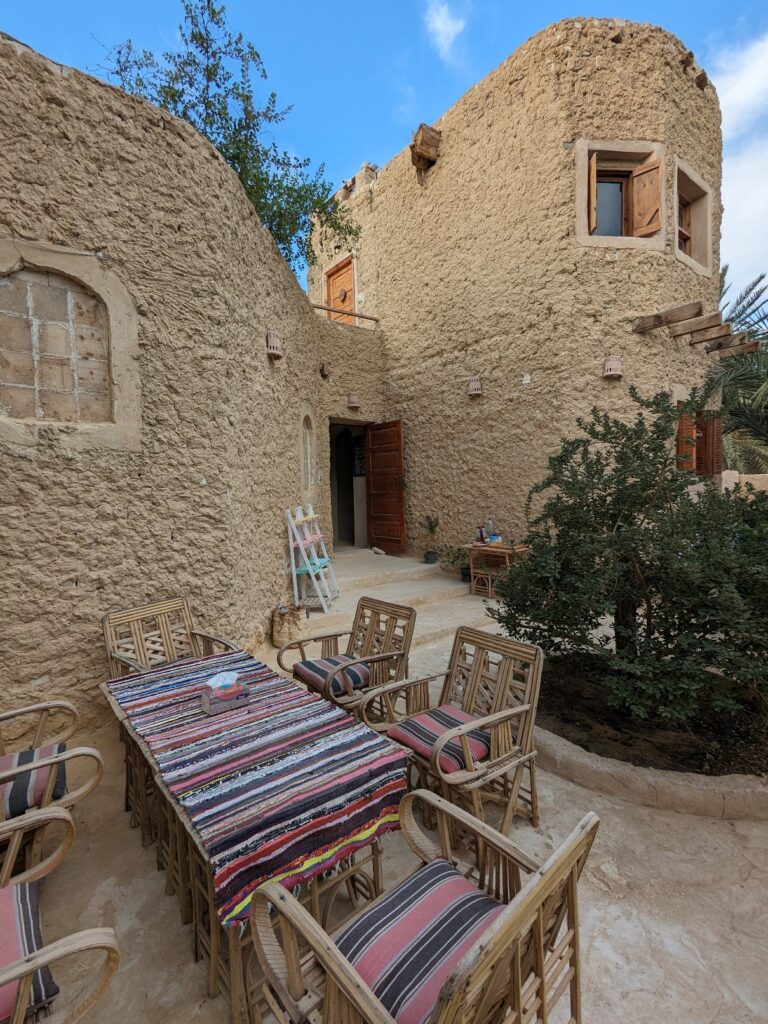
Where to stay: Sleep in Siwa
Sleep in Siwa is one of the nicest places I’ve ever stayed in, hands down. The place has exactly the kind of romanticised, idyllic desert look that you picture when you think of an oasis and when I arrived, the whole place seemed to appear out of nowhere between the palms. The whole place has been built by owner ‘Fox’ himself and is beautifully decorated. My room with en-suite was so comfortable and insanely clean. The only downside was that the room really kept the heat in, but I simply made use of the fan and tried to air it out at night.
The hotel has some great communal spaces outside, including a very loud and gorgeous cat. Breakfast was tasty and full of local dates (dates are literally everywhere in Siwa) and Fox himself was really helpful and accommodating: on arrival, he sat me down with a hand-drawn map and showed me where all of the main sites were located in relation to the hotel, before shepherding me out to try and catch the sunset (apparently, Siwans really like sunsets). 10/10 could not recommend enough. I booked via Booking.com.
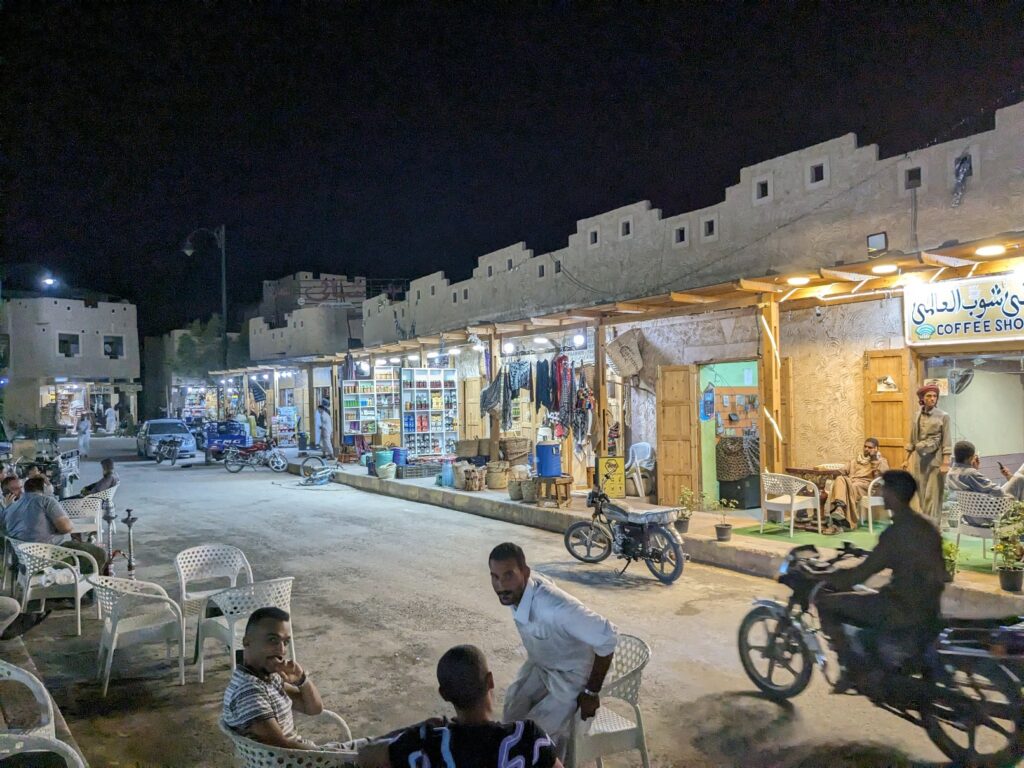
About Siwan Culture
I would say that there was a noticeable cultural difference in Siwa compared to other cities I visited in Egypt. Firstly, almost everything was very relaxed here: no hassling in shops, no sellers trying to push deals.
Secondly, Siwa was far more conservative in dress than any other city I visited – almost all local men I saw were dressed in a thobe (the long Islamic dress) and women in public were almost always dressed in a burqa. However, this is when I even saw women: I probably saw fewer than 5 local women in Siwa during my entire time there – though I did see more when travelling in and out of the city.
Additionally, you may be familiar with the historic gay culture that was observed in Siwa in the early 1900s. I saw absolutely no trace of this and was smart enough not to ask anyone about it, but it’s a really fascinating part of history (which present-day Egypt staunchly denies ever existed). I would recommend checking out the Wikipedia page on Siwa to read more about it, as I think it really speaks to the area’s complete historic isolation that allowed such a culture to flourish.
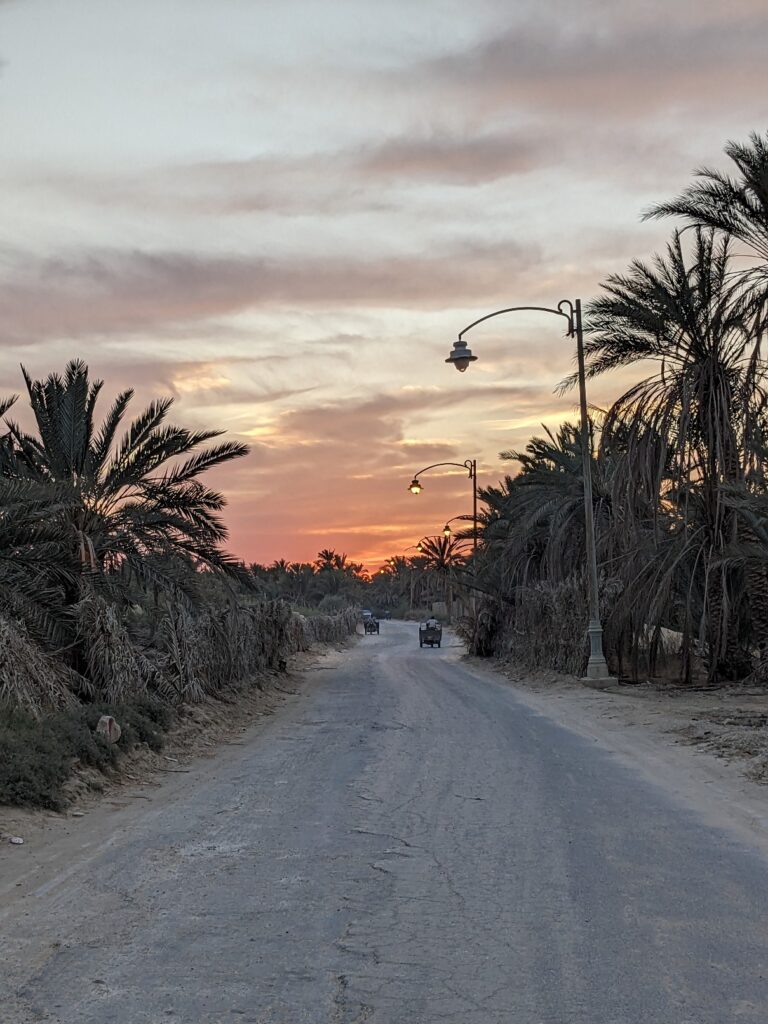
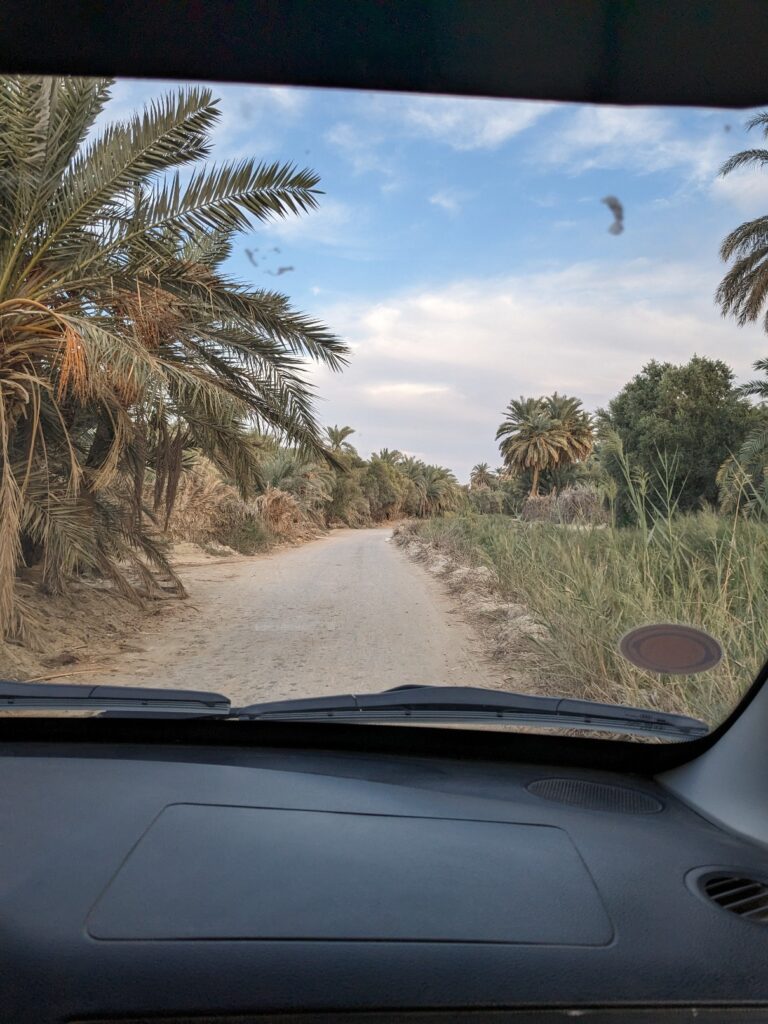
Arriving in Siwa and getting around Siwa Oasis
I arrived in Siwa around 18:00, where our bus was met with an army of tuk-tuks and taxi drivers. One central figure seemed to be organising everything and he quickly pointed me a car and I got in. My driver’s name was Mohi and after he dropped me at my accommodation, we exchanged numbers and he became my personal taxi for my time in Siwa, which was perfect as some of the sites (including the salt pools) are pretty far out of town. I would absolutely recommend doing the same when you arrive. Mohi gave some great recommendations (especially on sunsets) and according to the host at my accommodation, he charged me some really reasonable rates. (Fox said to expect to pay around $50 for a full day with a driver, though I paid less as I did shorter journeys with Mohi.)
You’ll also see plenty of tuk-tuks whizzing tourists around, which is naturally far cheaper than a taxi. I did this once for the novelty, but it was so uncomfortable for my 33-year-old self (the roads in the town are not paved). My teenage driver also casually placed a coffee table on the roof, which he dropped off en-route.
I would recommend renting bikes in Siwa too – I did this for a day just to go out and explore a few sites by myself. I paid 400 EGP to rent a bike for two days, although I don’t think I haggled with enough gusto.
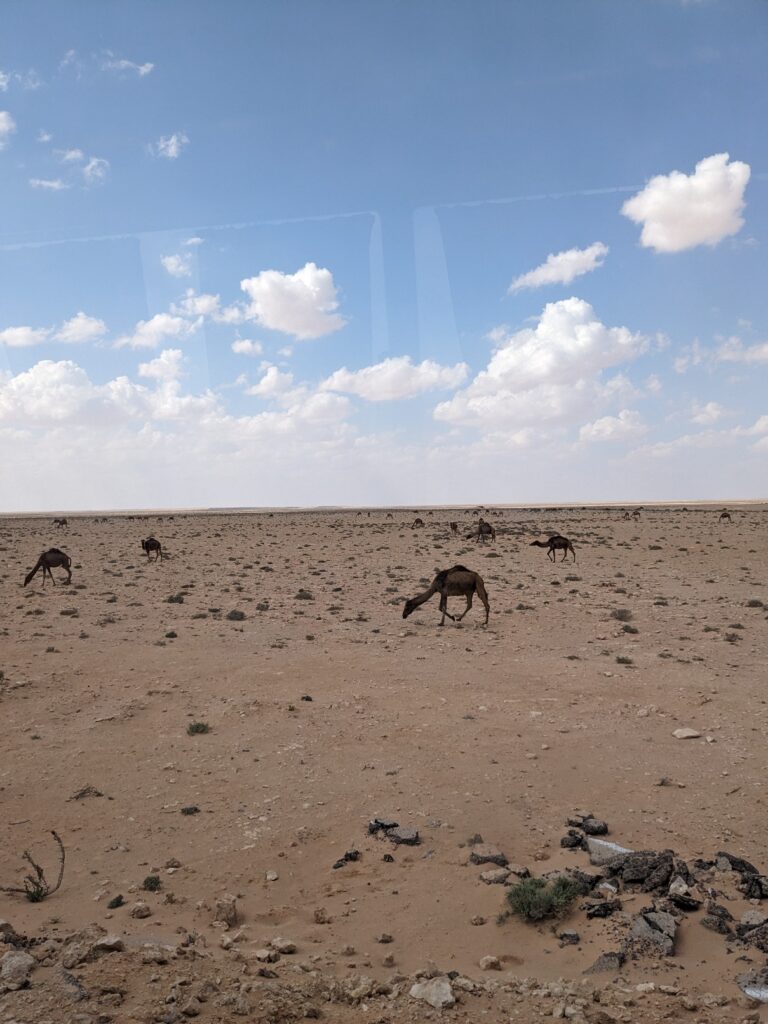
How to get to Siwa / travelling from Cairo to Siwa in one day
What’s the best way to get to the Siwa Oasis? There are several options: an overnight bus all the way from Cairo, or arriving via a bus or a shared minivan from Marsa Matruh on the coast. I tried the latter two options and would definitely recommend a shared minivan.
On my way to Siwa, I decided to break up the journey with an overnight stay in Marsa Matruh. I would not recommend this. Despite the beach and the Mediterranean looking incredible, my timing meant that I didn’t have any time to enjoy either: I arrived at 6pm and then left again at midday the next day. I was worried that there wouldn’t be enough options to get from Marsa Matruh to Siwa, but I needn’t have worried – there were plenty of minivans waiting and I could have easily gotten from Cairo to Siwa in one day.
In the end, I booked a minivan with GoBus from Cairo to Marsa Matruh and then the West Delta bus from Marsa Matruh to Siwa. GoBus is a good company and easy to book online. But I would also not recommend the bus to Siwa from Marsa Matruh. It took 4.5 hours as opposed to the advertised three hours and there were several arguments about seats on board before we set off. The bus was slow and uncomfortable and cost 85 EGP.
On the way back, I took an early minivan from Siwa to Marsa Matruh, which left full at around 07:45. I paid 160 for two seats (just so I would have a bit more space) and we arrived at MM at 11:15. From there, I got a coach with GoBus leaving at 12:00, arriving in Cairo at 18:00. This meant almost 10 hours of travelling in a day but honestly both the bus and the minivan were comfortable and the roads were in a decent condition. We had a stop on both legs of the journey to use the toilet and buy a coffee. This would be my recommendation for how to travel from Cairo to Siwa in a day.
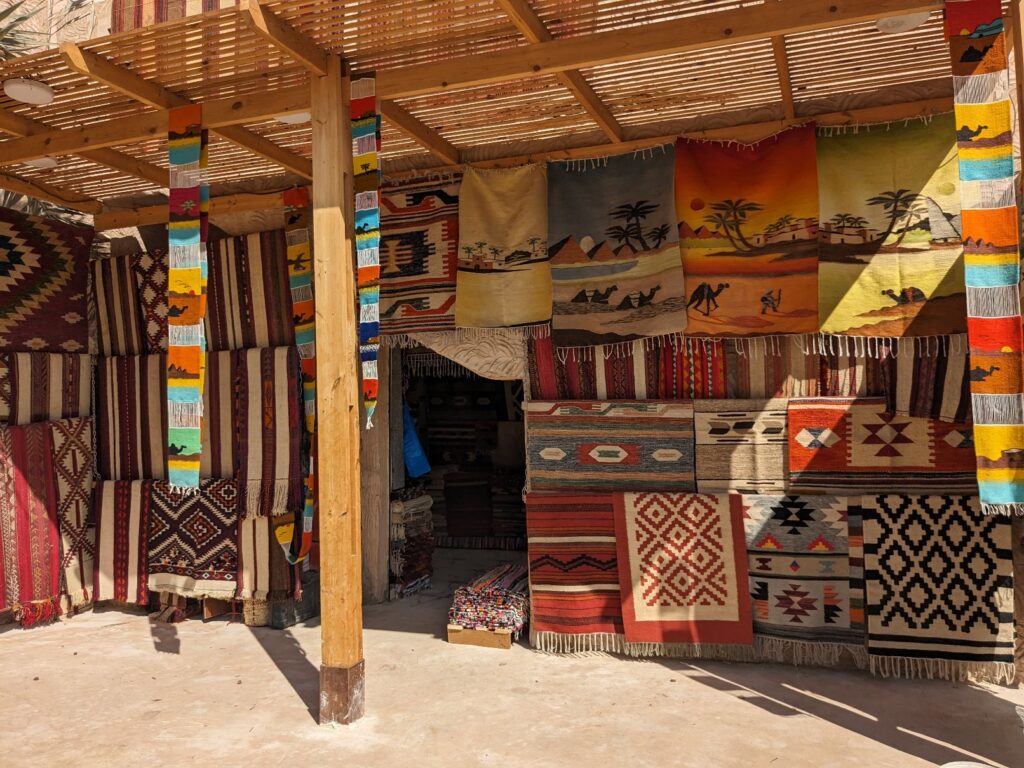
How long should you stay in Siwa? Is two days enough in Siwa?
I spent three nights and two (and a bit) days in Siwa but I would recommend spending a minimum of three full days there. In my two days, I felt a bit rushed and found plenty of spots where I would have happily spent more time reading and drinking mango juice or even just chilling at my amazing accommodation. Siwa is very relaxed, so allow enough time to soak it all in.
I hope this guide was useful and I hope you have a great time in Siwa!


Loved this! I need to go back to Egypt one day.
I loved it there – I think I need to go back soon, too!
This sounds like a great trip! What time of year did you visit? Also, how to arrange a private minivan from Cairo? I’d prefer to go directly there as quickly as possible…
Thanks for your comment, Beth. I went in early October. I booked my transport via Go-Bus but I think that private options will be easy to find online!